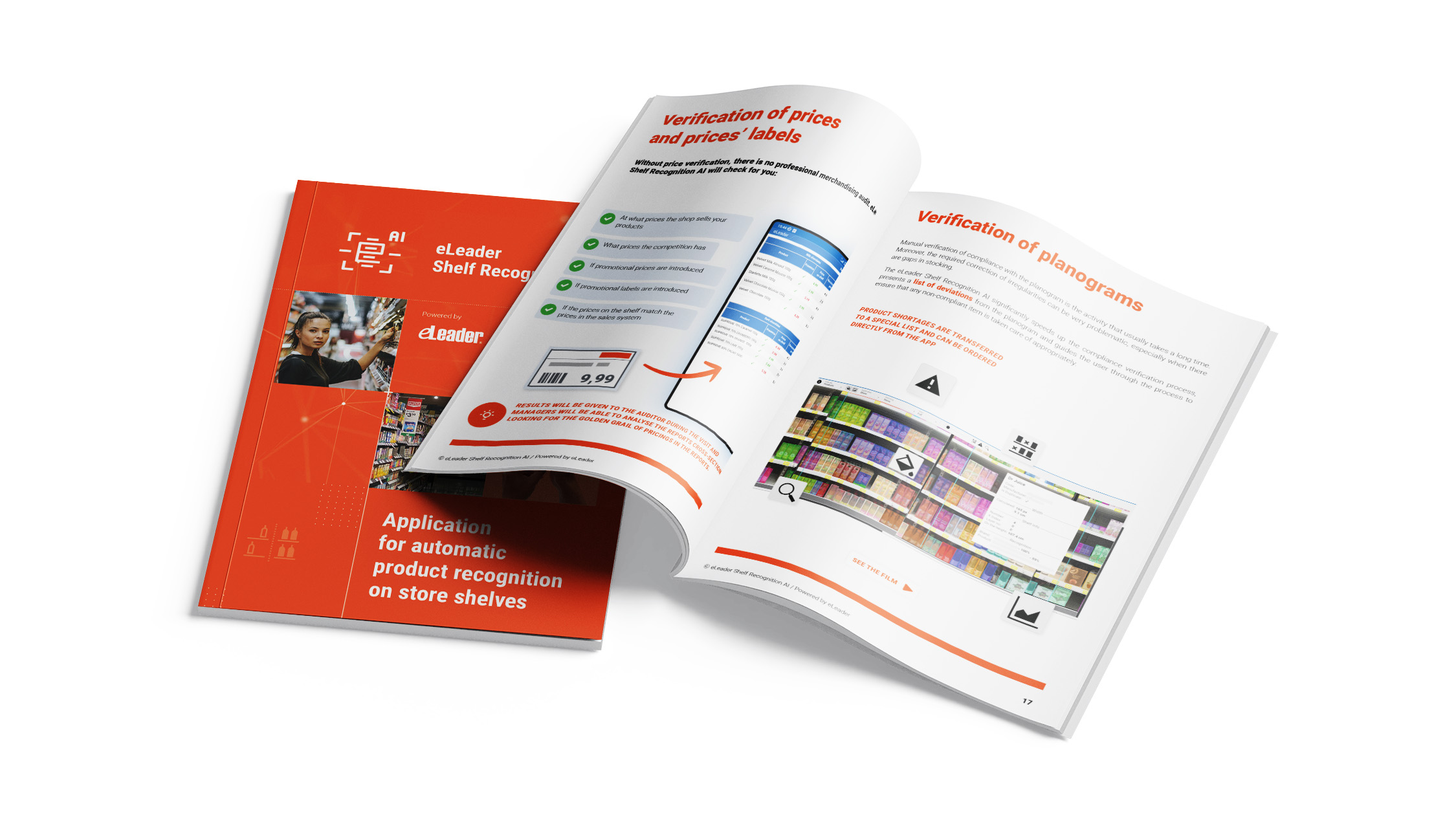
Monitoring the Work of Sales Representatives
How should the monitoring of Sales Representatives' work be conducted? Modules and functions of applications for salespeople and Field Force.
Sales visits, stationary merchandising, service visits, promotions, animations are activities that build relationships with customers, increase order flow, shape the company’s image, promote the offer, maintain product exposure – the list goes on. Brand awareness, customer satisfaction, the success of product innovations and often the success of the sales strategy depend on their course. The nature of this activity – far from sales managers and directors – makes it difficult to control the work of sales representatives or other field staff. It also weakens the employee’s bond with the company, testing morale and motivation to perform for the employer.

A weakened sense of control leads to increased mistrust. A regional sales manager or sales director may be frustrated by the lack of up-to-date information on how his people are performing. This will certainly make it more difficult to assess the factors affecting sales.
Unfortunately, a lack of control usually breeds an excessive need for it. Conflicts with subordinates and unnecessary escalations often occur in this area. The worst situation is when control activities are carried out unprofessionally (i.e. chaotic, personal, emotional, irregular). Then the gap between the team and management (and the organisation itself) widens, conflicts pile up, people start to sabotage their work and eventually leave. The negative impact of poorly managed control on the organisation can threaten the implementation of the sales strategy, and thus the very existence of the company.
There’s little room for turquoise in field service management because it’s a world of hard rules, requirements, targets, bonuses, deadlines, grumpy contractors and fickle customers. But that does not mean that performance cannot be monitored in a balanced, systematic and objective way.
Within the wide range of control methods and tools available to field force managers, some are worthy of being ‘controlled’ by Sales Force Automation (SFA)/Field Force Management (FFM) class applications. Since these applications effectively automate the processes in the field, the monitoring of their execution can be just as effectively automated. Let’s see if this is the practice case.
Controlling the working time of representatives
In the age of COVID-19, and with the proliferation of remote working, a question that has become crucial is: “Is my employee actually at work?” and “Is he spending his time performing his duties? These are questions that have always troubled managers of field sales teams. The answers are provided by one of the core functionalities of the SFA/FFM system, Time and Attendance. The first step is to enter working and non-working days (including holidays, redundancies, downtime, etc.) into the application, as well as the need to log starts, stops and breaks.
The employee’s declaration of work status on a given day provides basic information and is the starting point for further steps related to the execution of scheduled activities and the location of the person (e.g. whether there is a sales visit at point X).
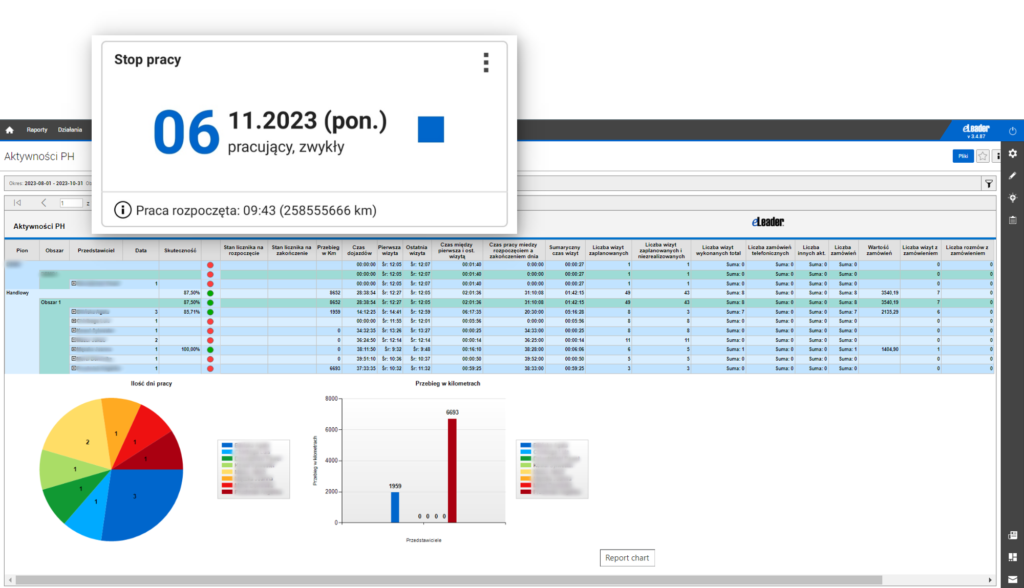
Checking the implementation of a salesperson’s itinerary
Field staff, especially sales staff, often work to itineraries, or lists of points to be visited on a given day. These are designed to fit in as many visits as possible using the shortest route. We write extensively about route planning in this article. The application for the sales representative records the visits to the stores (the representative starts the visit by selecting a point and declaring the working time). At the same time, the system automatically records the GPS position and compares it with the store data recorded in the geocoding process. Any discrepancies – both in time and location – are displayed on the report. This makes it easy to identify irregularities in the execution of work plans and take corrective action.
Control the work of the sales force – routes
The continuous GPS tracking of the device with the Sales Force Automation application installed allows you to monitor the route of the company car. This makes it possible to check whether, even if the routes are correctly executed, there are phenomena that can have a negative impact on the efficiency of the visits and the quality of the representatives’ work. For example, private travel during the time declared as working time at the expense of, for example, visit time. An algorithm based on GPS tracking compares the optimised travel route with the actual route travelled. If a worrying discrepancy is calculated (because a small detour, traffic jam, forced stop or breakdown can always occur), the system alerts the supervisor to a situation that requires clarification or intervention. Alerts of this type can be based on individual incidents or on an analysis of a period of time, such as a month. They can also take into account the team average or a similar period in the past. In this way, many phenomena that may be signs of declining performance can be identified. This can help to avoid more serious consequences, such as very high fuel bills.
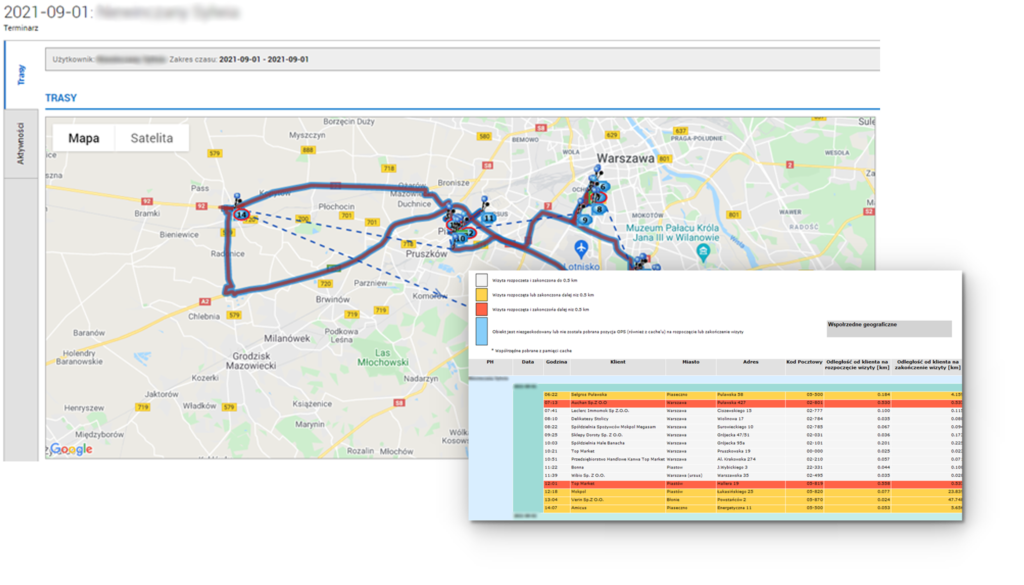
Controlling time at work (geofencing)
The nature of the work of stationary merchandisers, interviewers, promoters or entertainers means that they spend a lot of time in one place. This could be a shopping centre, for example, or a well-defined area of a city, such as a particular street or square. In such cases, it is necessary to determine the position of the sales rep very precisely. It is also important for managers to be able to detect when an employee leaves the area where he or she is supposed to be working. Geofencing, a technology that combines precise GPS and RFID data, is used to solve this problem. This makes it possible to define, on a digital map, the areas in which agents should work. In the event of an unauthorised departure from the area, the system automatically notifies the employee that he or she has been away from the workplace, eliminating the need for telephone intervention, which is often random and not always timely. The organisation can also set conditions for alerting managers through geo-fencing triggered mechanisms (e.g. consecutive on the same day or too far from area boundaries).
The SFA application can also prevent a sales call from starting if an employee is too far away from the destination. The manager can set a distance from the location within which the activity is to start.
Monitoring the work of sales representatives is not limited to tracking their routes or locations. Rather, these tools are an unpleasant necessity that cannot be avoided in certain working models. However, there are functionalities of mobile employee support systems that are not explicitly defined as controlling the work of sales representatives, but which are part of modern management. As is well known, it focuses on creating conditions in which employees – pursuing their goals – achieve the goals of the organisation.
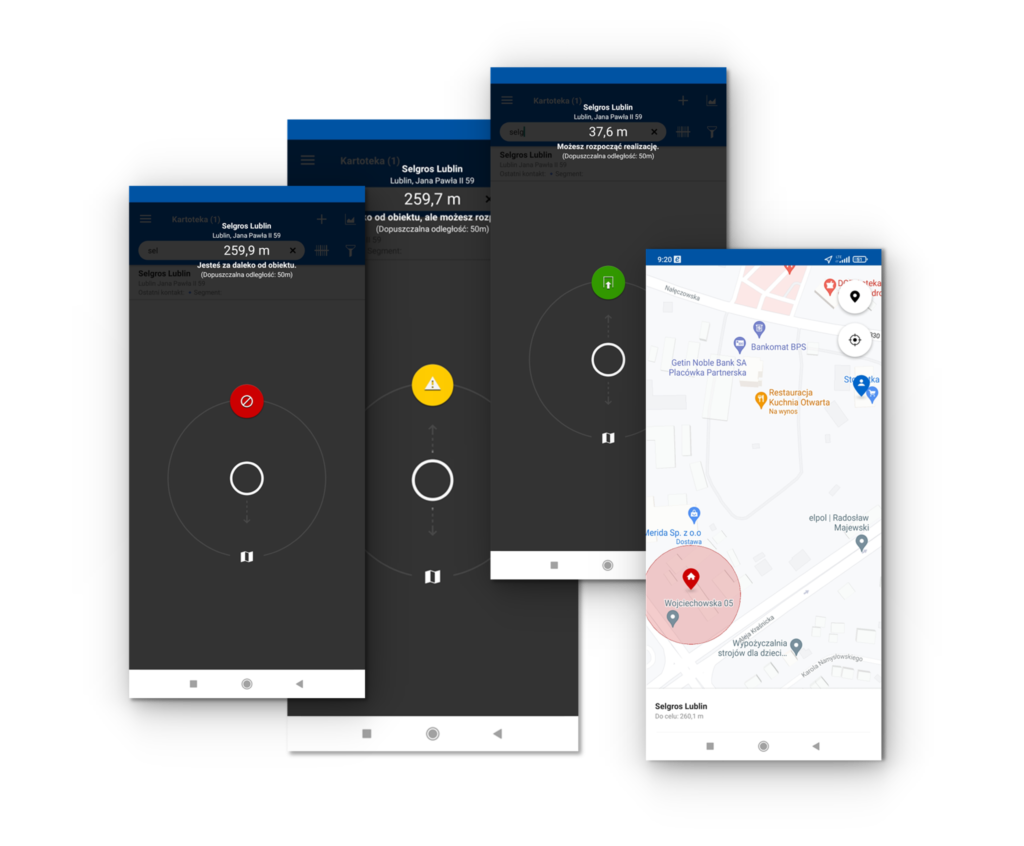
Control budgets and costs
Sales is a game of revenues and costs. Effective management aims to create synergies between the goals of the organisation and the goals of the people. Controlling budgets is a tool that helps to understand how much salespeople’s activities contribute to the company’s growth. The ability to track the achievement of sales targets while controlling costs and allocated resources (e.g. promotional materials, rebates, trade credit), as well as the continuous recording of expenses in the SFA application, supports the conscious work and the search for the best possible balance.
Managing expenses, budgets and sales targets in the rep’s mobile application means greater convenience and control. But more importantly, it’s also about self-monitoring, the results of which should be visible at the end of each accounting period.
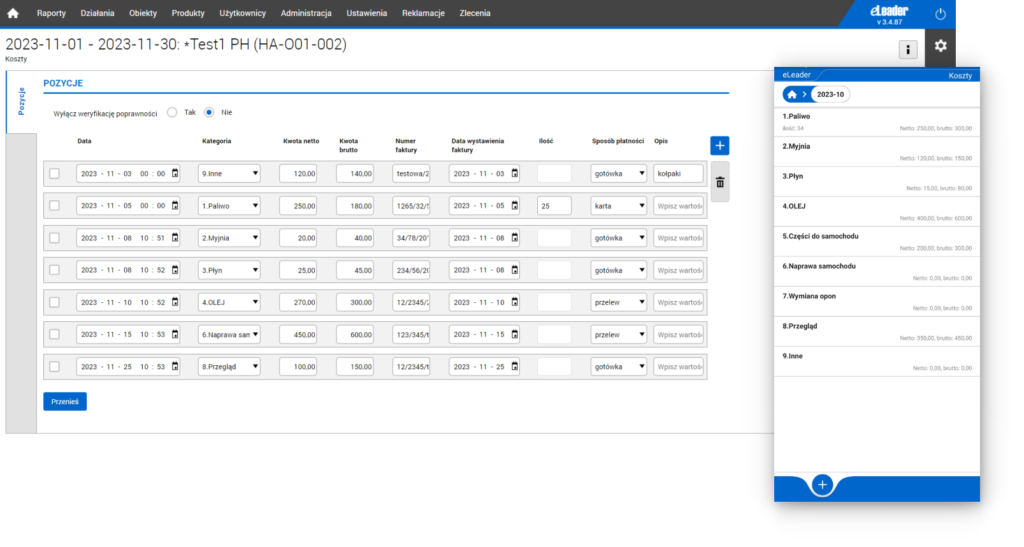
Time at Work Control (Geofencing)
The nature of the work of stationary merchandisers, interviewers, promoters or entertainers means that they spend a lot of time in one place. This could be a shopping centre, for example, or a well-defined area of a city, such as a particular street or square. In such cases, it is necessary to pinpoint the exact location of the salesperson. It is also important for managers to be able to detect when an employee leaves the area where he or she is supposed to be working. Geofencing, a technology that combines precise GPS and RFID data, is used to solve this problem. This makes it possible to define on a digital map the areas in which agents should work. In the event of an unauthorised departure from the area, the system automatically notifies the employee that he or she has been away from the workplace, eliminating the need for telephone intervention, which is often random and not always timely. The organisation can also set conditions for alerting managers through geo-fencing triggered mechanisms (e.g. consecutive on the same day or too far from area boundaries).
An interesting feature of eLeader Mobile Visit is the monitoring of user interactions with files, giving supervisors an idea of whether new materials are being read regularly, how long documents are being used and which items generate the longest interaction times.
Ensure display standards are met
If you’re responsible for maintaining the correct display standard for your mobile workforce (including those working at the point of sale), you’ll be pleased to know that solutions such as eLeader Shelf Recognition AI can provide objective information on the condition of the display and how competitor products compare. This is an extension of the traditional method of documenting merchandising surveys with photographs, which are still available in SFA systems but are often unreliable. Both the surveyor and their managers can obtain objective, real-time information on whether the KPIs assigned to the display have been met. It is also possible to recommend the correct layout and shelf correction during the same audit.
Controlling the work of the sales force – visit effectiveness
Controlling the work of the sales force – visit effectiveness
Among the tools used to control the work of the sales force (but indirectly, which adds value to other activities), we can include all kinds of reports or indicators. The better they are formulated and the more precisely they are delivered to the interested parties (in the right place and at the right time), the better the results we can expect. So we are talking about employee self-control rather than managerial control. A popular example of such a model is Perfect Store, which is a model for comprehensive evaluation at the point of sale (but can also be applied to employees themselves). Thanks to systematised indicators that are recalculated during the course of an activity, better store performance (as in Spomlek) or visits are achieved. It also reduces the need for coaching and auditing, and makes rewards and punishments more understandable, automated and predictable.
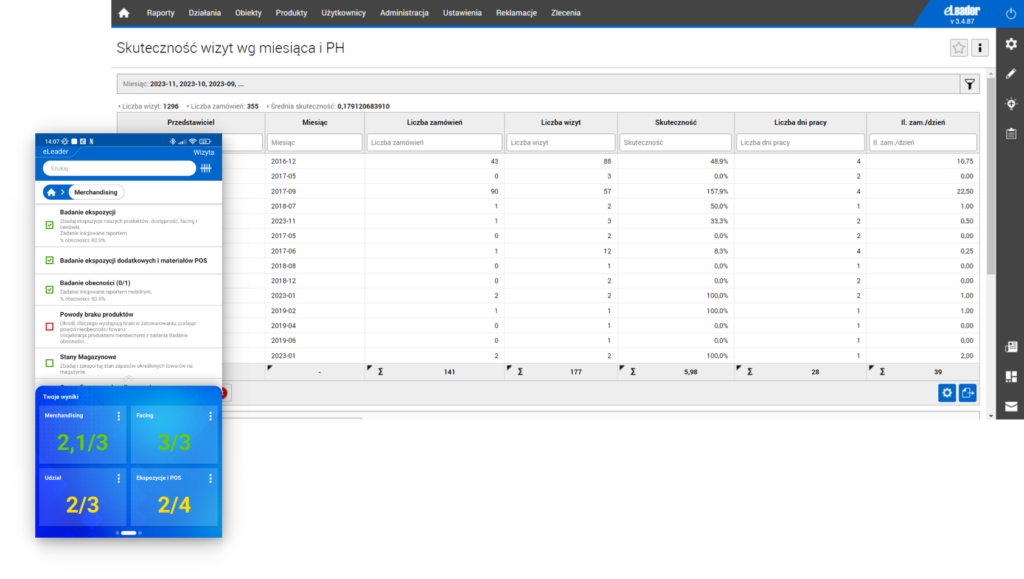
Other forms of control
The need to ensure that field work is carried out in accordance with policy (and sometimes that it is carried out at all) gives rise to a number of control methods. In this article, we will focus primarily on those supported by the Sales Force Automation application. In the canon of controls that streamline field work and reduce the risk of fraud, the creation of visit scenarios is one of them. This allows some tasks (e.g. orders) to be completed after others (e.g. product presence checks). We also have a special type of audit visit or mystery shopper model.
A separate group (closer to IT) includes tools to protect the fleet or business devices from theft (geo-fencing, GPS), control software installed on business devices, or special versions of applications available through corporate distribution (MDM, SSO). Regular contact with the office, e.g. via the messaging module within the application, is a substitute for a personal relationship. The Visit Assistant, available in eLeader Mobile Visit, works in a similar way, with the task of preparing a representative for a sales meeting based on up-to-date, dynamically filled information.
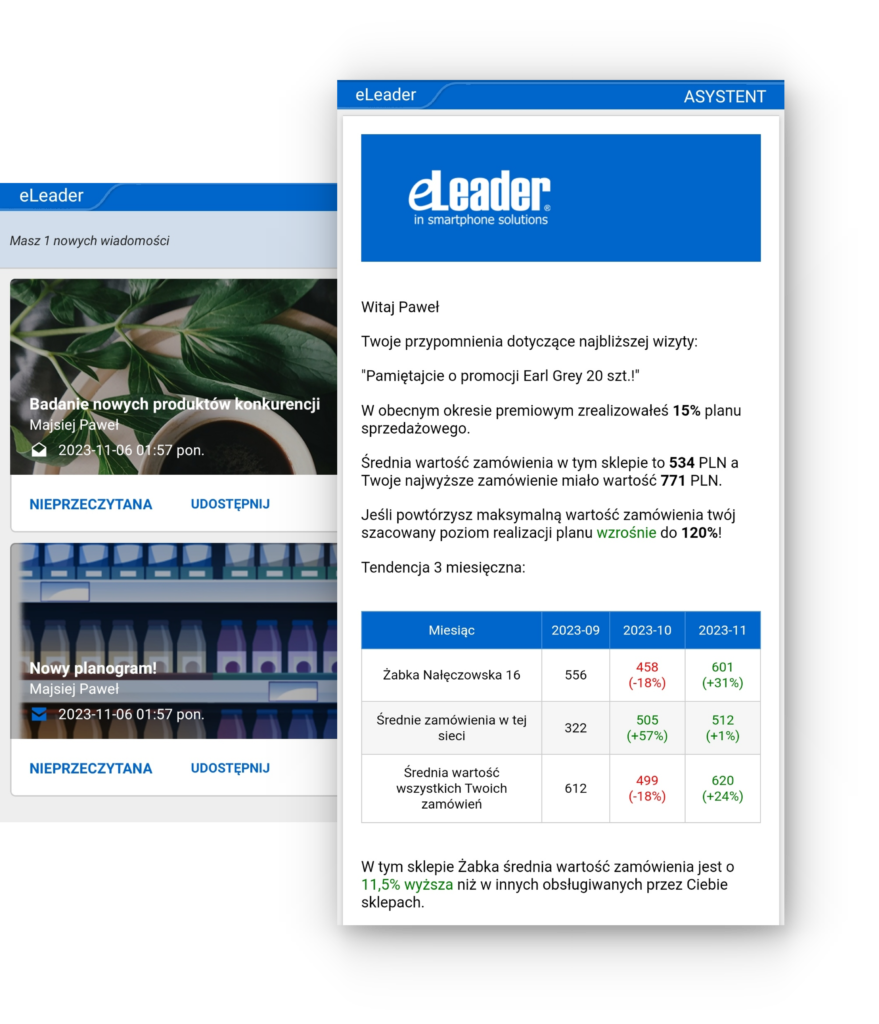
Reports and Alerts
All of the features of the SFA eLeader Mobile Visit application mentioned in this article can be combined with reports and alerts to quickly identify and inform about undesirable developments. Channels such as email, PUSH, notifications in the central application or SMS are available. Don’t forget that these methods also work well for positive and desirable phenomena (such as an employee reaching a sales target). So don’t be afraid to use them to praise and reward your people in the field.
Do your homework before you start controlling agents’ work
Before embarking on automated controls, make sure you have the right motivation, well-defined goals, the right level of training and the right tools (e.g. SFA system, up-to-date offers, promotional material, branding, company car). Make sure you give your people the knowledge they need to do their jobs and create a working environment and atmosphere that is not conducive to abuse. Remember that commitment breeds commitment – despite appearances, a good boss is harder to fool.
Make it clear to both parties that monitoring tools are primarily a source of information about how the plan is working and how it can be improved. Sometimes abuse can be the result of unrealistically planned routes or sales targets set too high.
Automated control can evoke associations with Orwellian Big Brother activities and raise ethical dilemmas. It should be used judiciously. The key to making field monitoring a collaborative tool is transparency of the rules and awareness of that fact by everyone involved in the process. We can compare it to the VAR system in football, which resolves contentious situations where people are unable to make a judgement call. It may be tedious and soulless at times, but it is ultimately fairer.
Niche knowledge straight to your inbox!
If you find what you’re reading interesting, sign up for our newsletter to receive valuable articles straight to your email inbox.

Leave e-mail here:

